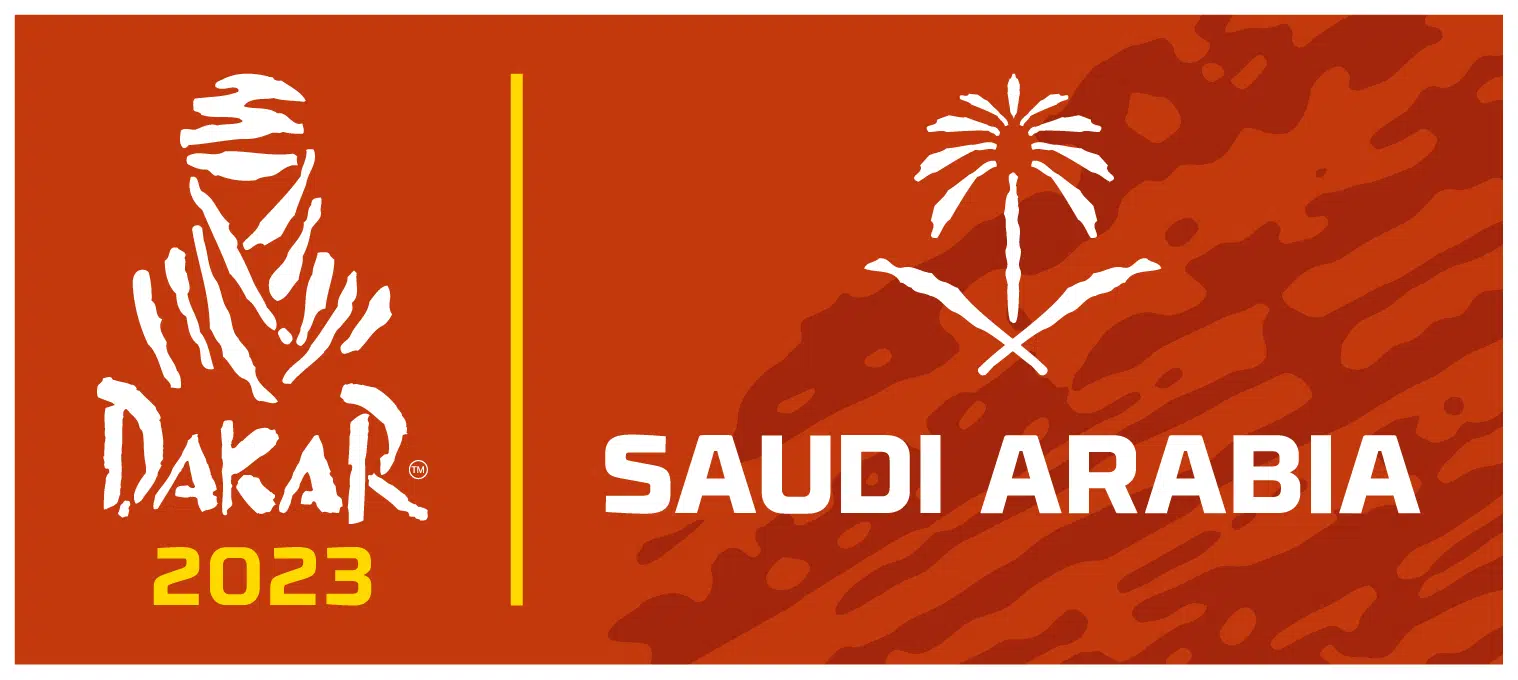Table of Contents
Dakar 2023: conquering the desert
Dakar? What is that?
We have all heard of the Dakar Rally, formerly called Paris-Dakar. A race in 14 stages, spectacular landscapes, extreme conditions and motor vehicles. ❤ In short, a most exquisite mix.
Do you want to know everything about this legendary event? Keep reading, I think it will make you want to follow it this year!
Dakar 101
So where to start? Well let’s start at the beginning!
It was in 1978 that this first long-distance rally-raid race was held and which would bear the name Paris-Dakar until 2009. Presented over a period of 2 to 3 weeks, it always takes place between the end of December and mid-January. It is a TV race known worldwide, but in fact it is a stage of the World Rally Raid Championship.
At the beginning of its history, pilots departed from Paris and traveled to a ferry that took them to Algiers in Algeria. They then undertook to cross the Algerian desert, then the African continent in order to get to Dakar. Each year the route was different.
At the end of 2007, however, after several terrorist threats and the murder of four French people in Mauritania (where 8 of the 14 stages of the race were to be held) doubts hang over the holding of the competition since the safety of the pilots and their team is put in jeopardy.
The day before the start, the Dakar organization announced the cancellation of the event for the first time in its history. It is the end of journeys in Africa and the beginning of a new era. The 2009 edition took place on the South American continent and it was at this time that the race changed its name to be called Rallye-Dakar.
Now that we know the past, let’s focus on the present. This 15-day rally is divided into 14 stages and has 5 main categories.
- Motorbike
- ATV/Quad
- Side-by-side
- Car
- Truck
These categories are made up of several sub-categories but if I want to keep you focused, we will stick to these because we quickly get lost! 🤯
Manufacturers often use the Dakar as a laboratory for their vehicles. They test their capabilities in the most extreme conditions.
It is also an incredible showcase for a manufacturer to show the robustness, reliability and performance of its vehicles.
Obviously, these are all modified cars designed for this kind of challenge. The Yamaha Ténéré that you buy from a dealer will not be the same one used in a world rally competition and we understand why…
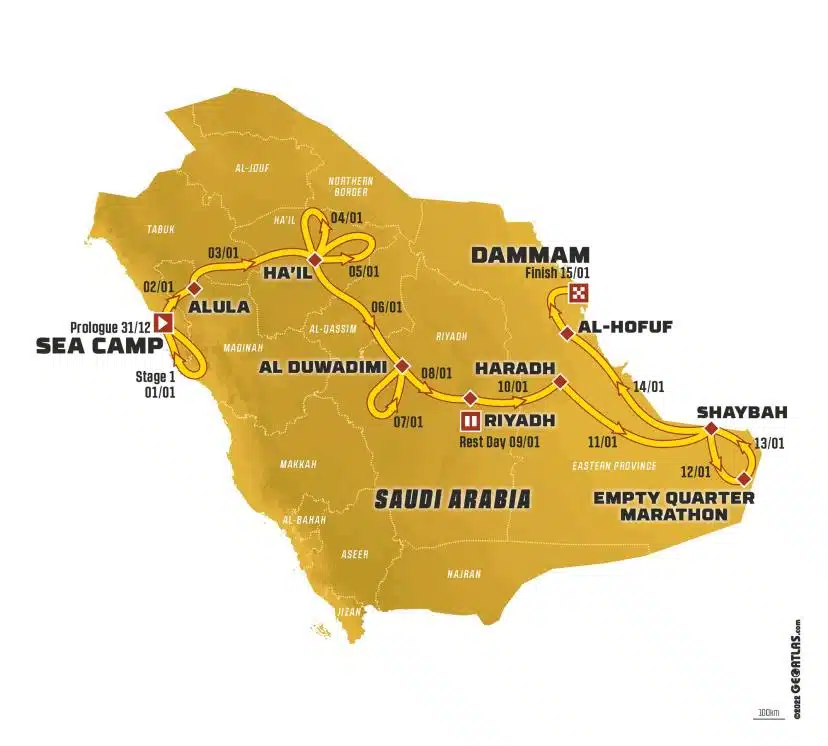
How does a stage take place?
Every morning before the start, the teams receive what is called the “Roadbook”. It is a map including the route to follow, which was until now unknown, the mandatory stops and hundreds of pictograms whose understanding is essential in order to be able to orient yourself as well as possible.
Each category has its own start. It is the motorcycles that start the day with a departure at dawn. The driver or the winning team of the previous year has the privilege of starting first and the others will start at one minute intervals each. It is important to emphasize that the ranking is not counted in points but in time.
The driver or team that completes the stage the fastest while respecting the route will be in the lead. The gap with the others will be determined by the difference in time taken to complete the course. Time accumulates step by step.
Example :
I am the first to go and you are second. As explained above, you will start one minute after me. I finish my race in 1h30min and you in 1h40min. The difference on the board will therefore be 10 minutes. The next day, I always start first since it’s my position in the standings and you will always start 1 minute after me. In order to take the lead, you will have to be at least 11 minutes faster in order to catch up with the delay from the day before. It’s child’s play!
It is therefore between 800 and 900 km per day that the different teams travel. However, not all of this distance is timed. Indeed, every morning, the riders leave the nomadic camp in which they spent the night (commonly called Bivouacs) in order to reach the official start line of the stage. This is when the clock starts – we call it “La Spéciale” – and it stops when the finish line is crossed. From there, it is necessary to travel the distance that separates them from the next resting place.
Interesting fact :
Do you think it’s an advantage to be the first at the start? In any other racing situation it would seem like the answer is yes, but here it is not. Indeed, some team strategies consist of deliberately wasting time here and there so as not to start first. For what? Because whoever goes ahead faces a completely virgin desert; no traces, no clues, no dust in the distance that rises as other competitors pass, nothing, nada, niet! It is for these reasons that the pilots prefer to start second in order to have an advantage and benchmarks.
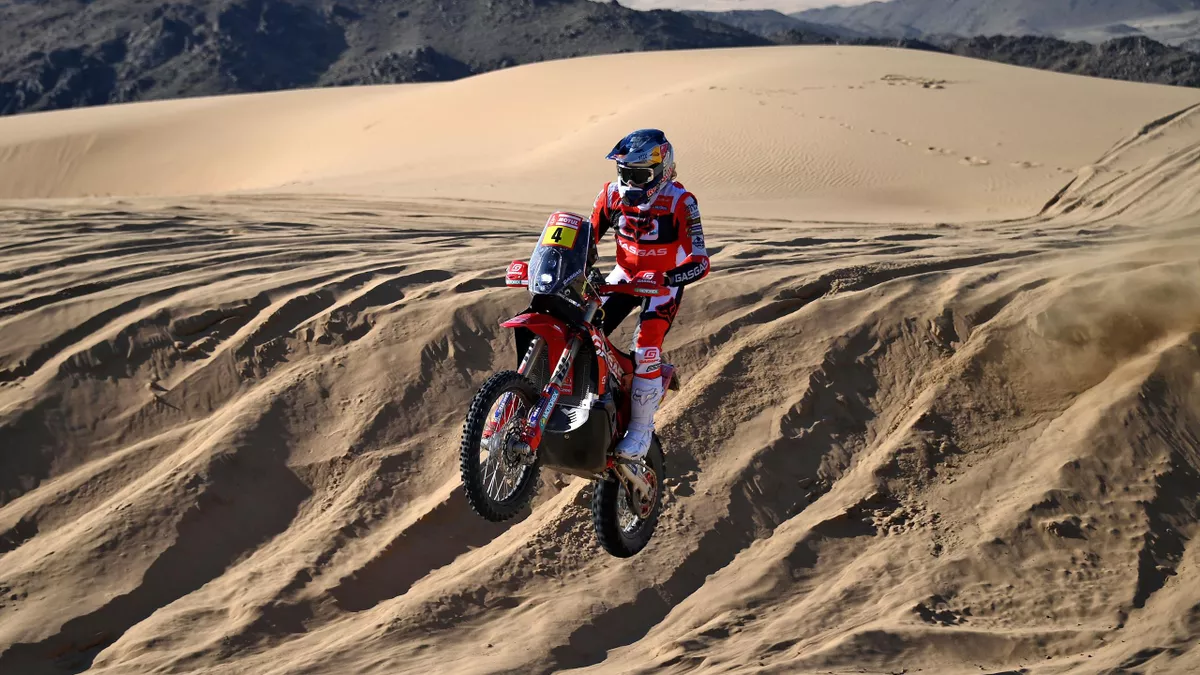
The place of women in all this?
Last year, around twenty women took part in the Rallye-Dakar and for the first time in the history of this race, an all-female team took part.
From the driver to the mechanic, Team FN-Speed was made up of 6 women including the Spanish captain, Merce Marti. These ladies, accompanied by their Can-Am Maverick X3, were the first to attempt this stroke of genius.
Unfortunately, following an incident, they had to forfeit when at the 10th stage. It was still quite a feat and this initiative did not go unnoticed.
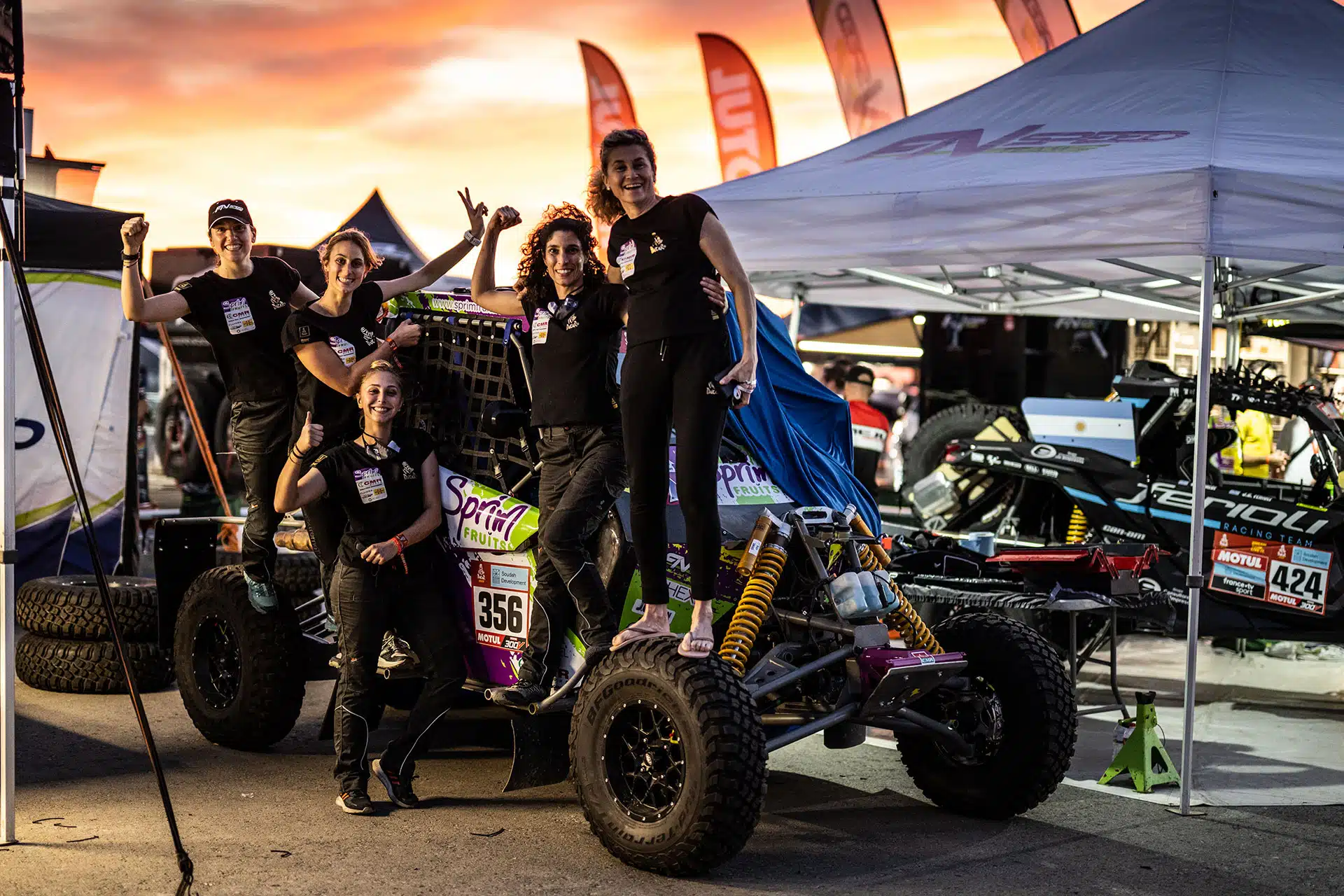
For the 2023 edition, more than thirty women will take the start on January 1 in Saudi Arabia. Each year, the number of female registrations increases and it is thanks to women like Merce and her team or Cristina Gutiérrez, the Spanish dentist. Yes yes, dentist!
Canal treatment in the morning and rally in the desert in the afternoon. In 2017, she became the first woman to complete the off-road classic in the car category. In 2021, in the “Light Prototypes” vehicle subcategory, she wins a Dakar stage and succeeds the only other woman to achieve the feat: Jutta Kleinschmidt in 2005. Last year, with her co-driver, she finished third in her category. This year, she will join the Can-Am Factory team in partnership with Red Bull. Tell you how excited I was to learn that! 🤩

Quebec shines in the desert!
It is a source of great pride to be able to see that the success of BRP vehicles continues on the other side of the ocean.
During the 2022 edition in the SSV category, we were treated to an all-Can-Am podium for the 5th consecutive year.
In fact, of the 44 vehicles in the race, only 5 came from another manufacturer. This is called total domination by the Quebec manufacturer. That’s something to be proud of!!
The Maverick X3 is the model of choice and having tried it a few times, I can understand why. Of course, no need to tell me, I know it’s just in my head that I’m driving the same SSV as these endurance racing champions…
This year, Can-Am has teamed up with powerhouse Red Bull ending their long-standing relationship with Monster Energy. Did you know that BRP’s racing department is located right here in Valcourt? This is where all of the manufacturer’s racing vehicles are developed. It’s still a little velvet to see Quebec products shine in the world of competition. 🏆
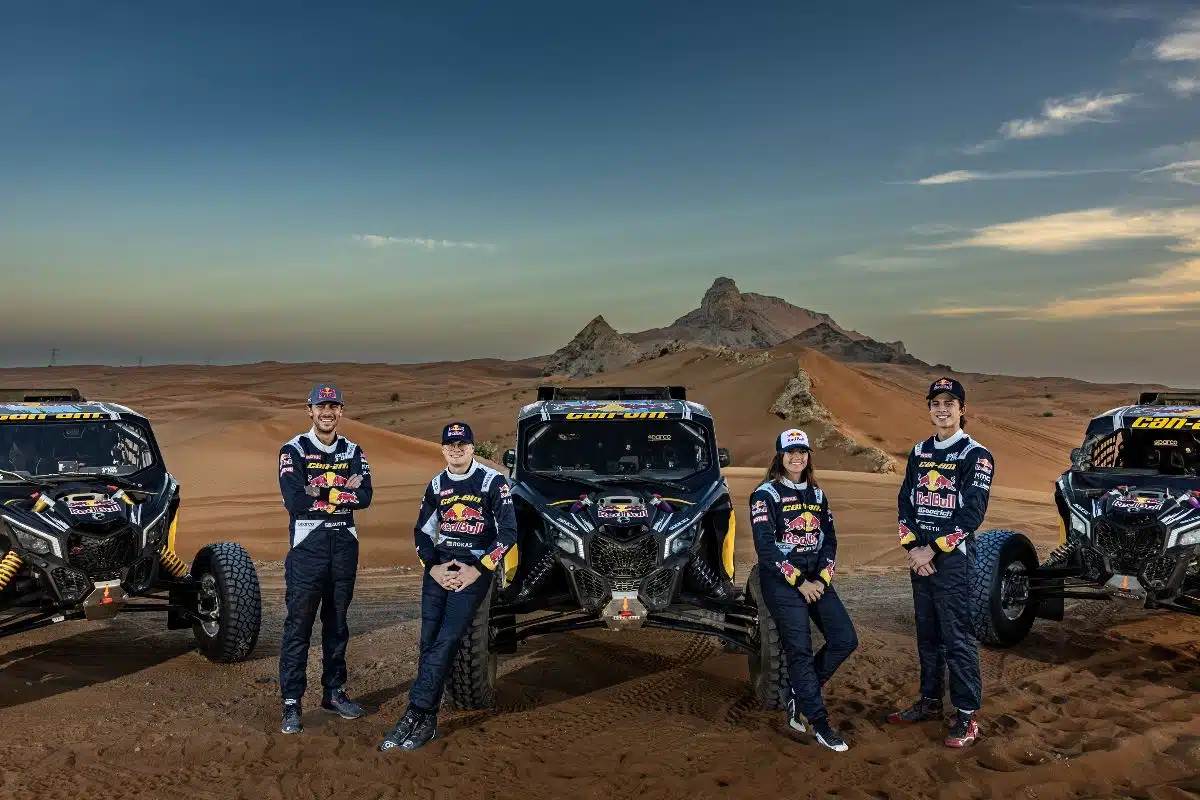
In conclusion
The Dakar Rally is 15 days of strong emotions, endurance races, challenges, sorrows and joys but it is above all a spectacular event. Like many, I knew the name but I had never really invested in this competition until last year.
If like me you are a fan of racing of all kinds, I suggest you follow their Youtube account. You will be able to see the daily summaries of each of the categories throughout the rally. In addition, there are plenty of capsules that present the pilots and their team. With that, I wish you a good Dakar!
See you next time!


